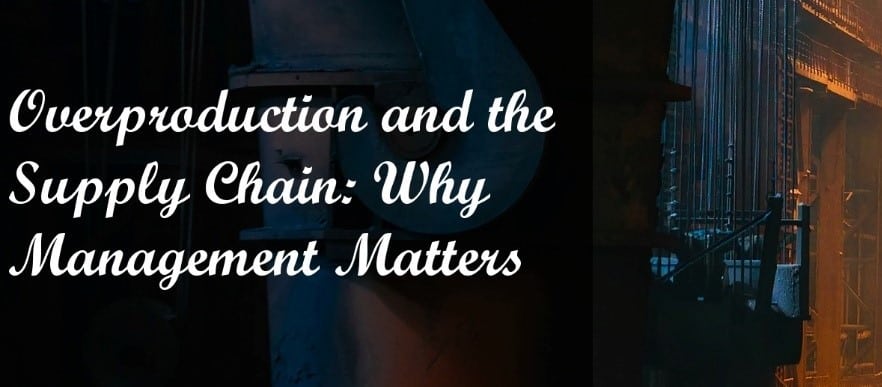Overproduction and the Supply Chain: Why Management Matters
It might surprise you to know that overproduction can be far more harmful to your company’s bottom line than you have imagined.
But first, there are 7 points in manufacturing at which wasteful practices can occur, and you’ll need to get these under control. Someone with a business management certification can be invaluable in reining in all of these deficiencies.
Once you have controlled for these waste points, you can seek out another danger—overproduction—that lurks behind them.
Manufacturing Waste Points
Following is a run-down of the 7 types of wasteful practices.
1. Lead Time
If there is too much time between one stop and next, time is wasted.
2. Transport
When conveyance among companies and facilities is excessive, both time and materials are wasted.
3. System Complexity
Sometimes, there is a mismatch between an elaborate schedule system and the actual needs of the project.
4. Space
Allot plenty of space for storing inventory, but not too much, so as not to cause delays in your manufacturing projects.
5. Inventory
Obviously, the right materials need to be available at the right times and in the right quantities in order for a project to run smoothly.
6. Packaging
Make sure materials are properly packaged. This will avoid damage and corrections. Improper packaging can lead to waste of materials, time, and money.
7. Human Effort
Sometimes, the very people charged with the fulfillment of a project are themselves the source of confusion. When this happens, work often needs to be redone.
RELATED ARTICLE: THE BENEFITS OF INVENTORY MANAGEMENT WITH CMMS SOFTWARE
How Overproduction Hurts
Once you have the above 7 points under control, you can take a look at the issue of overproduction versus underproduction.
At first glance, you might think overproduction would be a justifiable alternative underproduction. However, its results can be worse than underproduction. For example, there are risks involved with any surplus, and proper management is the only solution.
Only when a business uses its resources effectively can it boost revenues. However, overproduction is a clear sign of poor planning and improper management. As a matter of fact, overproduction can bring serious harm to the company’s revenue. That’s because overproduction wastes materials, time and money and makes it almost impossible for any project to remain within its budget.
How to Monitor for Overproduction
Some of the ways to monitor for overproduction are to:
1. Make Customer Demand Visible to All Production Team Members
You’ll go a long way toward getting a handle on overproduction if all team members know the level of customer demand.
2. Collaborate and Use Process Discipline
Healthy collaboration among team members will allow workers to identify problems and find solutions.
3. Focus on the Fulfillment Cost
When you’re planning for a new project, keep in mind the total costs for fulfilling that project. While you want to keep customer expectations in mind, try to make choices about materials and processes early on that will keep overall costs down.
But wait. There’s more.
If you know your product will be in demand, a company strategy of underproduction can work to your company’s benefit. As the law of supply and demand tells us, the less there is of a certain product, the greater the demand will be. Of course, this strategy will only work if your company manufactures something the world wants to buy.
Consider Subaru
Numerous businesses in various industries employ a strategy of underproduction. For example, Fuji Heavy Industries, Ltd., which manufactures the Subaru automobile, is reported to remain short on its production of a desired range of vehicles as a matter of practice.
Despite the fact that it has a strong US presence and years of growth, the company is slow to take measures to address the apparent shortage of the vehicles. As a matter of fact, it appears not to acknowledge customer demand and purposely keeps inventory at low levels. So far, this strategy has paid off well for Subaru, as demand remains high and sales are strong.
While this strategy may or may not work for your company, it is a lesson we would all do well to keep in mind.

